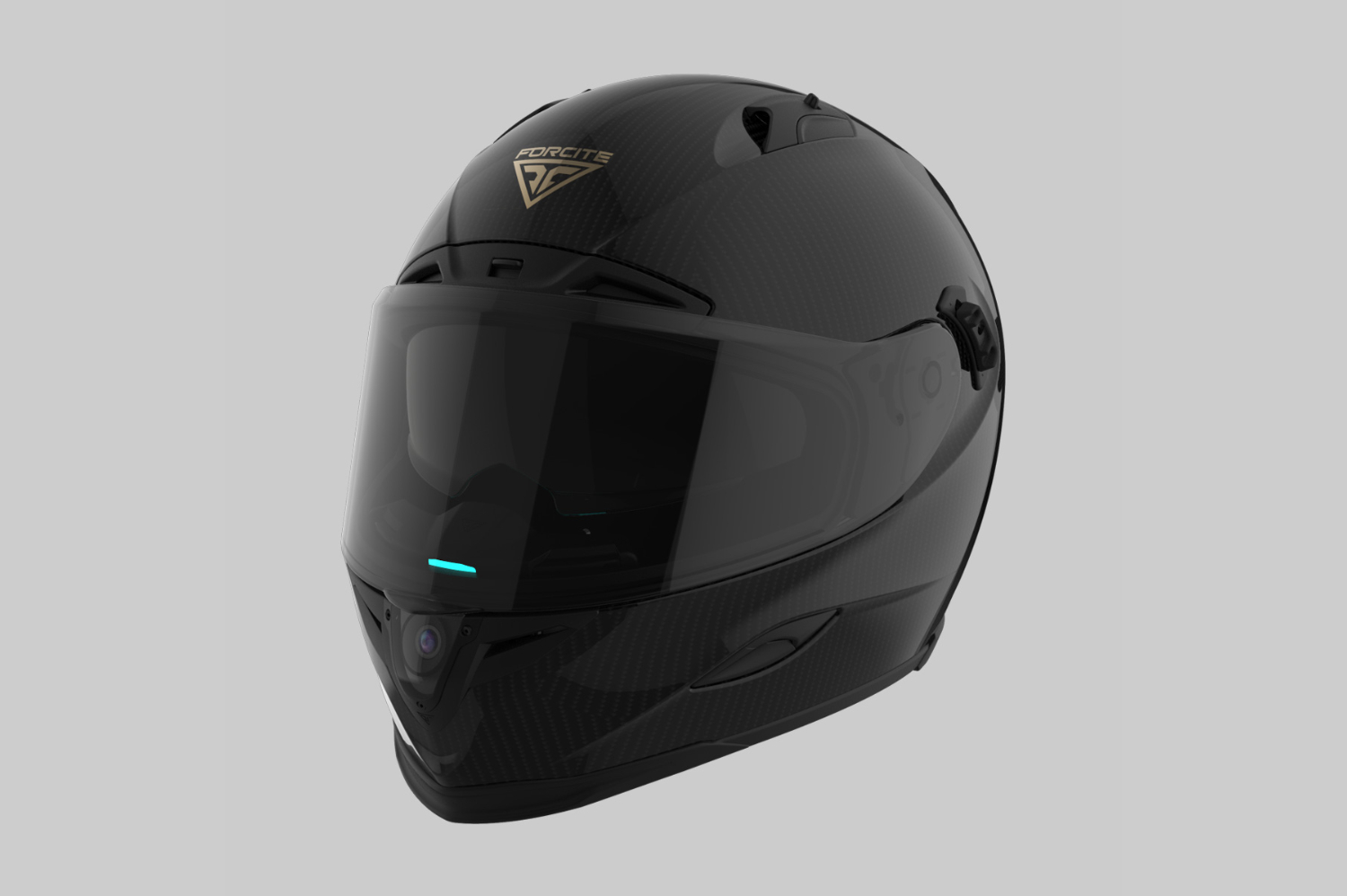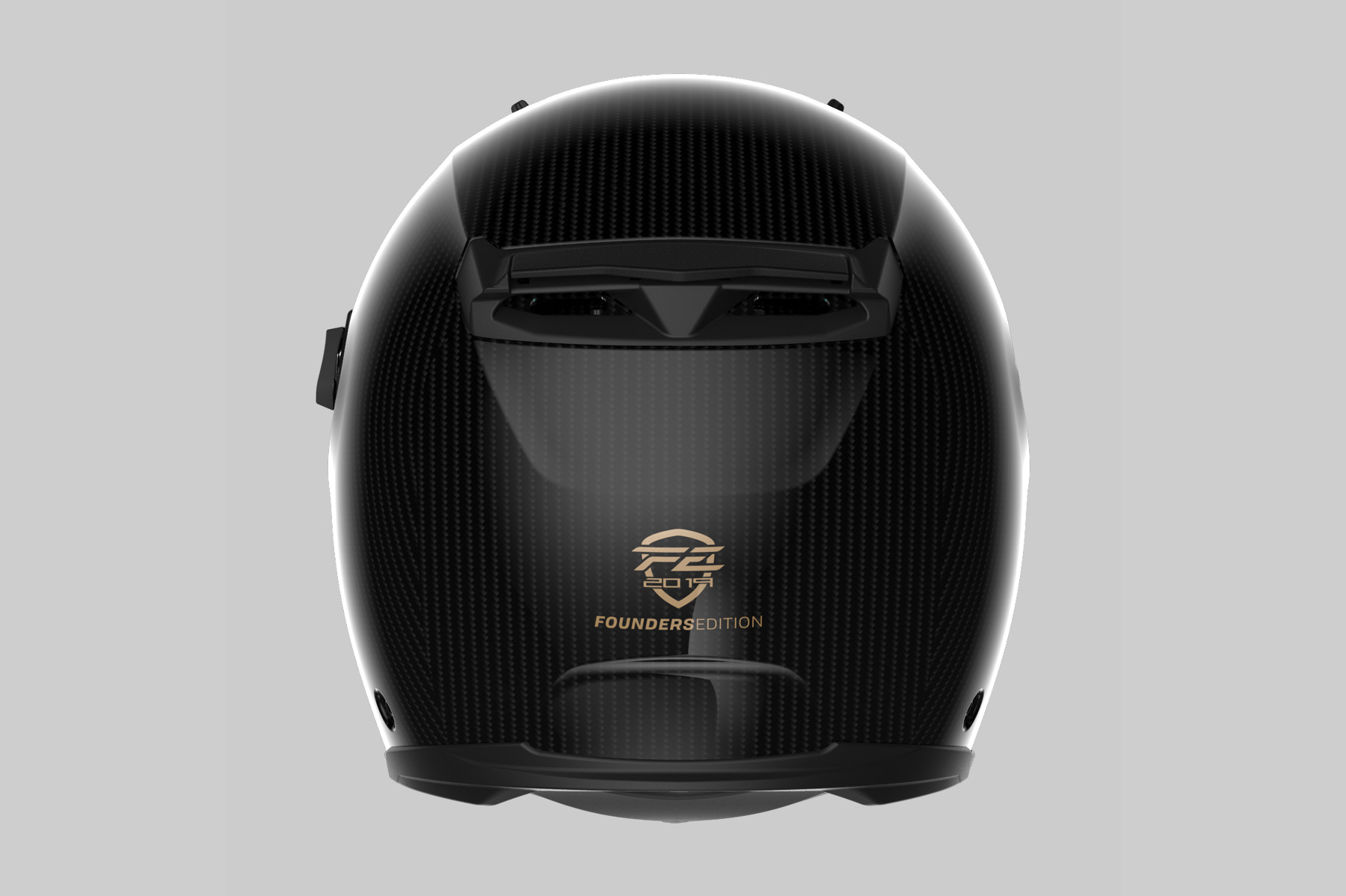Australian smart motorcycle helmet maker Forcite broke through the barriers that prevented several earlier smart helmet makers from going to production with heavily hyped designs. The initial run of 1,000 MK1 Founders Edition helmets sold out quickly, according to founder and CEO Alfred Boyadgis, 700 of which sold in the first 48 hours. Next on the horizon, Forcite intends to bring the MK1 to the U.S. in 2020.
Forcite’s MK1 patented helmet tech Raydar system includes LED technology currently used in Formula 1 race cars, a Sony HD video camera, dual microphones and ultra-thin 8mm speakers, and a fingertip handlebar controller. Data streams to the helmet via Forcite’s cloud-based server system, with information that includes directions, hazards, and alerts.
The MK1’s LED system uses visual cues on the visor for directions, weather, and other alerts with a combination of a flashing band of colored light just below the visor and audio messages. A green light indicates a turn coming up, blue is for the weather, orange is a caution signal, and flashing red and blue indicates police nearby. The whole point of the integrated components is to communicate to the rider without requiring eyes off the road.
The Sony military-grade camera has near-infrared sensors, an extra-wide 166-degree diagonal field of vision. The camera records continuous video for up to five hours. The camera is on the helmet front, just below the integrated visor.
According to Forcite, the MK1 audio system blocks road noise for phone calls, streaming music, or inter-helmet communication with other MK1 users. An onboard computer located in the lower front section manages the helmet’s sensors and audio and camera controls.
The MK1 helmet is designed to be both strong and lightweight, which means it’s made out of carbon fiber; the shell is a T-400 carbon fiber composite. The helmet weighs just 3.4 pounds, and Forcite claims it meets both ECE 22.05 and Department of Transportation certifications. There are eight ventilation ports, four in front, two on top, and two in the rear, all designed for maximum airflow with minimum noise.
The MKI has a UV400-rated visor and free anti-fog inserts. Interchangeable visors are available with clear, smoke, and iridium tints. There’s also an internal pull-down UV400 sun visor. To keep the helmet sanitary inside, Forcite uses an antibacterial and anti-odor inner liner riders can remove for washing.
You don’t need to touch the helmet to turn functions on or off, take calls, repeat instructions, or operate the MK1’s tech in any way. The Forcite handlebar control manages all operations so you can keep both hands on the bars while you ride.
Boyadgis and key members of the Forcite management staff are in the U.S. this month meeting with dealerships, establishing relationships, and holding events where prospective buyers can experience the MK1 on a closed track.
Forcite has not yet announced a date for the U.S. availability of the MK1, but the plan is to begin selling the helmet in the U.S. in 2020. Boyadgis expect the MK1 price will be less than $1,000 when it is available.






